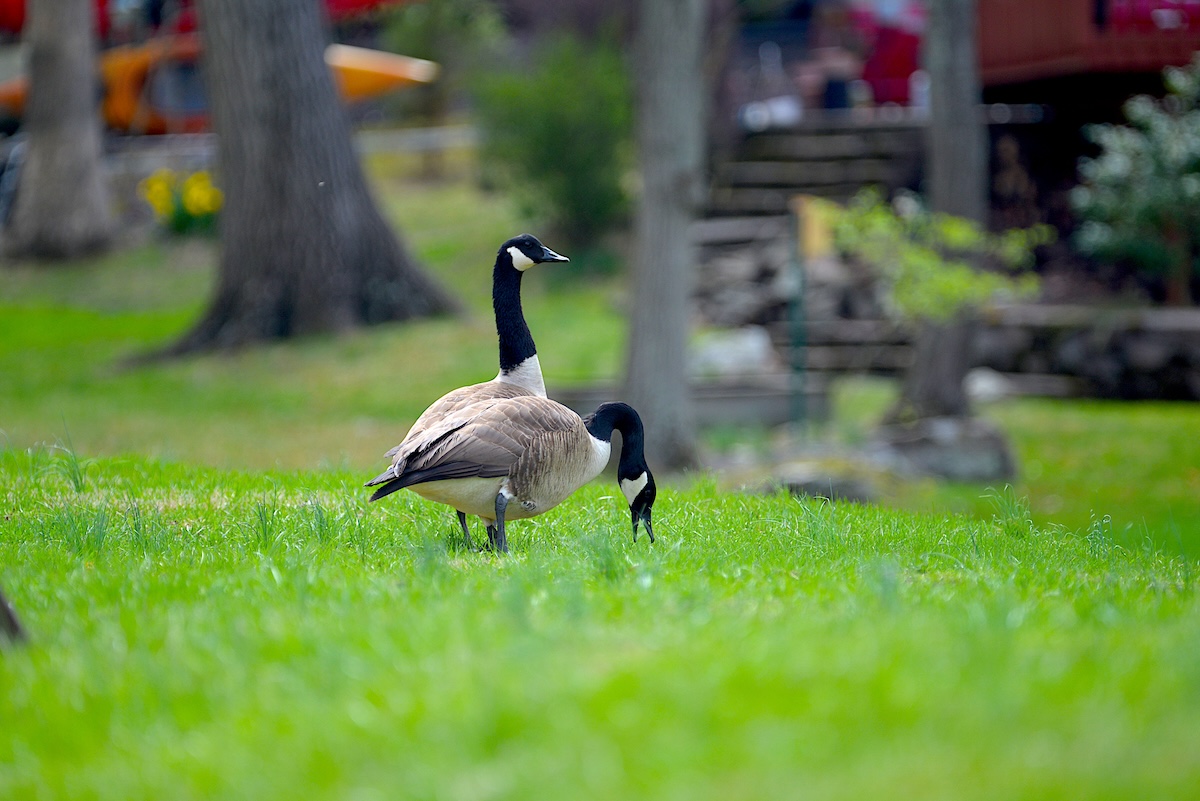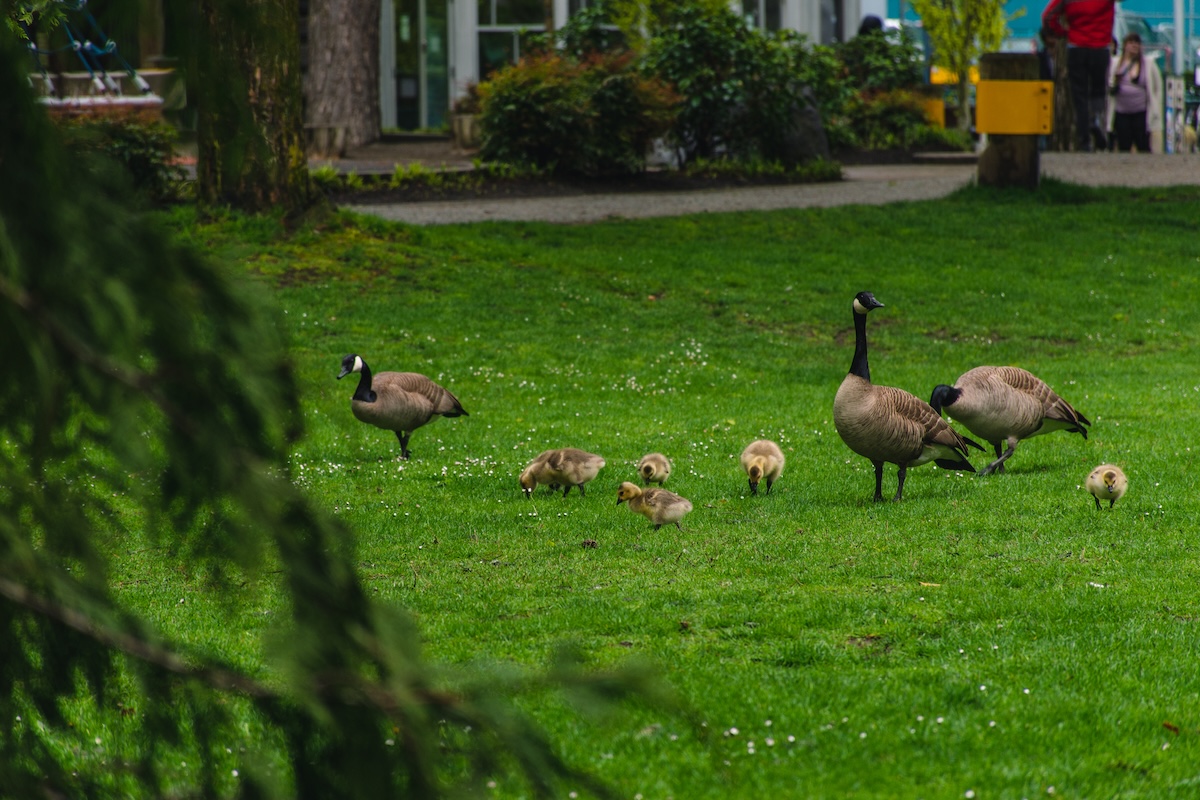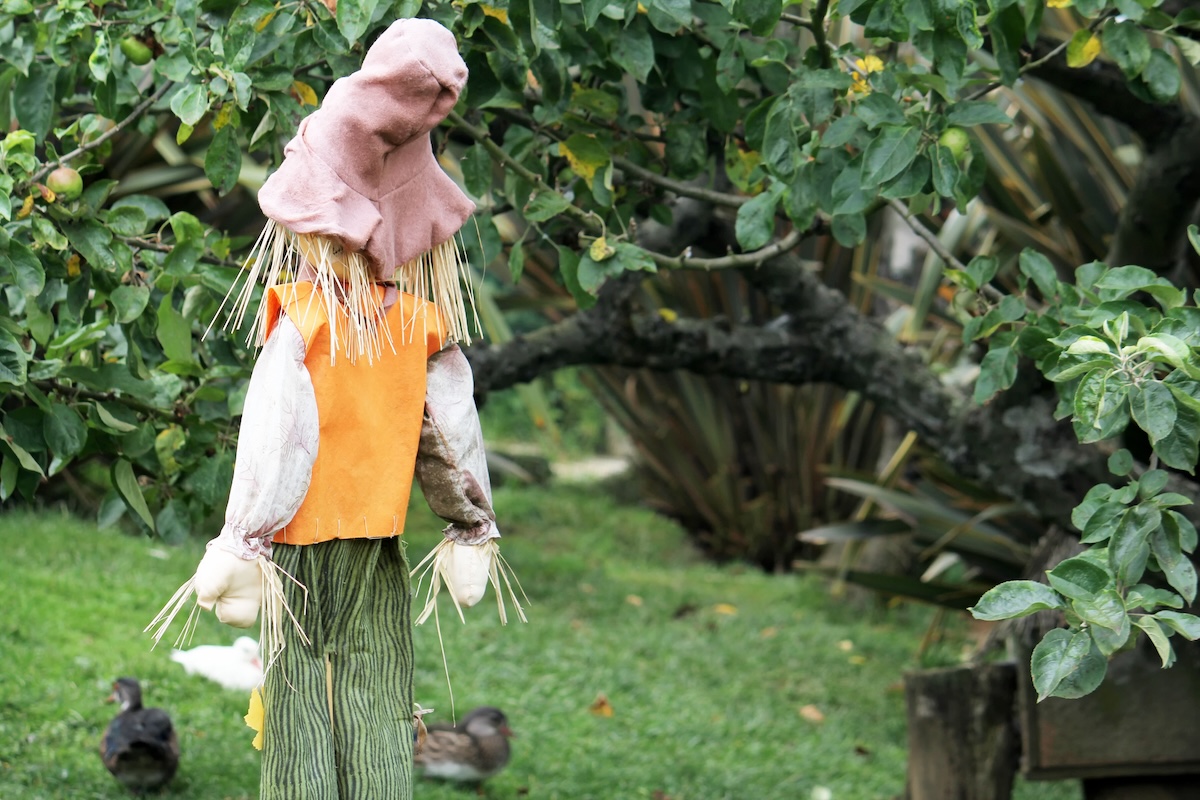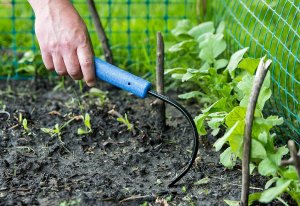

We may earn revenue from the products available on this page and participate in affiliate programs. Learn More ›
Canada geese are migratory birds, but not all of them actually migrate. Many flocks take up permanent residence in neighborhoods, parks, and backyards when the conditions are right. As Caleb Fabry of Town and Country Pest Solutions in Rochester, New York, explains, “We’ve accidentally created the perfect habitat for them: Lawns provide food, nearby ponds provide water, and wide-open spaces give them a sense of safety.” That combination makes it tough to convince geese to move on once they’ve settled in.
The trouble for homeowners is that geese don’t just pass through quietly. They leave droppings across lawns and walkways, contaminate water features, and might act aggressively if they feel their nest is threatened. Because they can live for a decade or more, a goose problem rarely resolves itself.
The good news is that with the right timing and humane strategies, it’s possible to keep geese out of your yard and reclaim your outdoor space.
Why Geese Are a Problem
Yes, they’re impressive birds to watch, but a flock of Canada geese can quickly turn into a nuisance when they settle in a yard. Fabry notes that a well-kept lawn is like “an all-you-can-eat buffet,” and the wide-open spaces around homes make geese feel safe from predators. Once established, geese bring a number of challenges for homeowners:
- Excessive droppings: Goose droppings are unsightly, slippery, and capable of contaminating gardens, patios, and water features.
- Aggressive behavior: Geese are territorial, especially in nesting season, and might charge pets or people.
- Landscape damage: Grazing on short grass can weaken turf, while constant foot traffic compacts the soil.
- Noise and disruption: Loud honking and flock activity can make outdoor spaces less enjoyable.
Goose Migration Seasons

Not all Canada geese migrate. While some will fly south in the winter and return north in spring, others become year-round residents if they find a good source of food, water, and safety. Understanding when geese are most likely to appear, and how their behavior shifts with the seasons, can help you plan the best geese deterrent strategy.
- Spring (March to May): This is the most critical time to act. Fabry explains that if a pair begins nesting, “they are incredibly territorial and aggressive, and once they have eggs, they will not leave.” By law, under the Migratory Bird Treaty Act, people cannot disturb nests with eggs without a federal permit. Early, consistent hazing before the geese lay their eggs is key.
- Summer (late June to July): Adult geese molt and temporarily lose the ability to fly, so they are very difficult to move. If a flock settles during this period, they may stay until their feathers grow back.
- Fall and winter (August to February): Geese gather in flocks to feed, but they are generally easier to deter since they aren’t tied to nests. In many regions, migratory geese pass through during these months and are less of a long-term problem.
By recognizing whether the birds on your property are migratory or resident, you’ll know if you’re dealing with a short-term inconvenience or a recurring issue that requires more persistent management.
The Best Ways to Keep Geese Off Your Property
The most important factor in goose control is persistence. “Being a pest is the single most effective, low-cost thing a homeowner can do to make the geese feel unsafe the moment they arrive,” says Fabry. These humane methods, used consistently and in combination, can make your property far less attractive to geese.
Get rid of food sources.
Short, lush lawns are irresistible to geese. Avoid overfertilizing and, if possible, overseed with grass varieties they don’t favor (like Bluejoint or Canada Wild Rye) because they create tall sight barriers. And above all, never feed geese. Fabry stresses that feeding them is “the worst thing you can do,” since it encourages flocks to grow and return.
Use motion deterrents.
Sprinklers that activate when movement is detected, flashing lights, or rotating devices can scare geese and discourage them from settling down. For the best results, change their position frequently so geese don’t get used to them.
Scare them with noises.
Hand clapping, air horns, or recordings of predator calls can break up a flock. Fabry notes, however, that noises work best as part of a varied strategy to get rid of geese. If the sound is repetitive and predictable, geese might adapt quickly.
Set up predator decoys or scarecrows.

Coyotes are natural goose predators, and a bird decoy can help, especially if it moves or you reposition it often enough. Scarecrows can play a similar role, though both lose effectiveness if left in one spot for too long.
Deter them with scents or sprays.
Nontoxic repellents (usually containing methyl anthranilate, which is made from grapes) coat the grass with a taste and smell geese dislike. These products don’t harm the birds but need to be reapplied after rain.
Change the landscaping.
To get rid of geese in your yard, Fabry recommends planting tall grasses, native shrubs, or wildflowers along pond edges to block sightlines and create cover where predators might lurk. Even a low fence between water and lawn can deter geese, since they prefer to walk between food and water rather than fly.
Let your dog outside more.

Geese are naturally wary of dogs. Letting your dog out in the yard during goose season can help keep flocks at bay, since barking or chasing makes geese feel unsafe. Professional services also use trained herding dogs for more persistent problems.
Keep the pressure consistent.
Fabry emphasizes that the most successful strategy to keep geese out of your yard is a human one: “Every time you see them on your lawn, walk out toward them assertively—clap, open an umbrella, make them work.” If the effort to stay outweighs the reward, they’ll move on.
Canada geese are fascinating birds to watch at a lake or pond. They have a wingspan of up to 6 feet and may weigh as much as 14 pounds. However, Canada geese in your yard are not as delightfully fascinating. Geese leave droppings all over grass and walkways. In addition to being unsightly and unpleasant to step in, these droppings can contaminate gardens, fountains, and other areas of a yard. Due to their large size, geese can even knock over smaller pets or children and may become aggressive if they feel threatened.
FAQ
Yes. Canada geese, their nests, and eggs are federally protected under the Migratory Bird Treaty Act. You can’t harm or remove them without a permit.
Geese respond best to perceived predators. Fabry notes that trained dogs are the “gold standard,” while motion and noise deterrents can also work when varied.
Act early in spring with consistent hazing—walking toward them, clapping, or using deterrents. Once they lay eggs, geese become aggressive and you cannot legally move them.
Use a shovel, rake, or leaf blower to collect droppings. Some homeowners spray down hard surfaces with a hose, but consistent goose deterrence is the only long-term solution.
